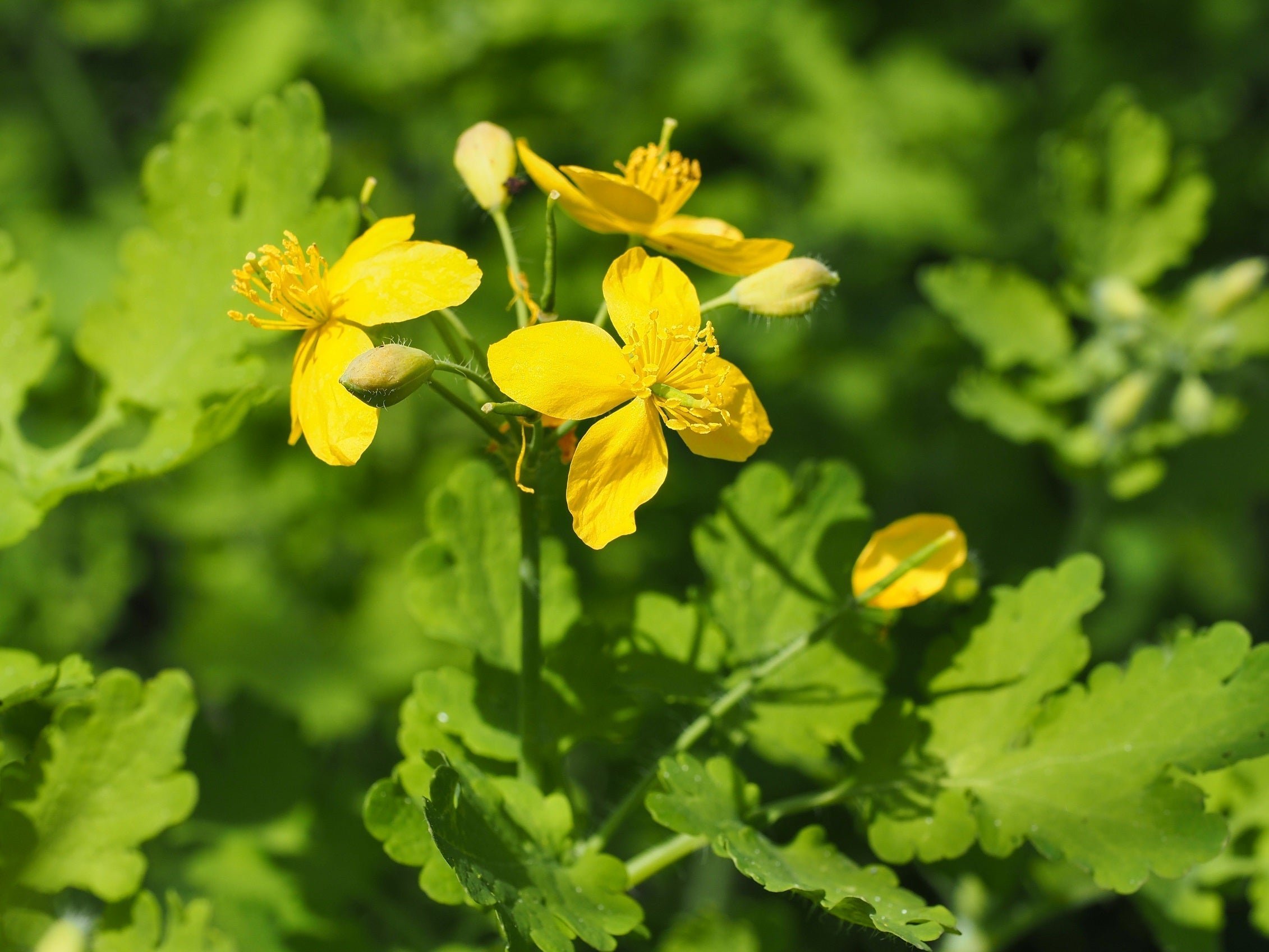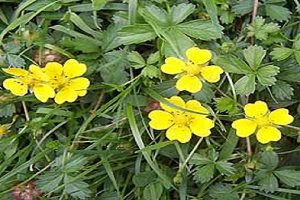As an Amazon Associate, I earn from qualifying purchases.
Weeds with yellow flowers include dandelions, buttercups, and yellow rocket. These weeds often invade lawns and gardens.
Yellow-flowered weeds can be both beautiful and troublesome. Dandelions are the most common, recognized by their bright yellow blooms and fluffy seed heads. Buttercups, another yellow-flowered weed, thrive in moist areas and can quickly spread. Yellow rocket, often found in fields and roadsides, grows rapidly and can choke out other plants.
Identifying these weeds early helps in managing their spread. Effective weed control includes regular mowing and using herbicides. Yellow-flowered weeds can be persistent, requiring consistent effort for complete eradication. Proper lawn care and maintenance are crucial to preventing their growth.

Common Yellow Flowering Weeds
Dandelions are common weeds with bright yellow flowers. They grow in lawns and gardens. These weeds have a deep taproot that makes them hard to remove. Dandelions spread quickly through wind-dispersed seeds. The yellow flowers turn into white puffballs that children love to blow. Dandelions are also edible and used in salads and teas.
Buttercups are another weed with yellow flowers. They prefer damp and shady areas. Their flowers are shiny and look like small cups. Buttercups can be toxic to animals if eaten in large amounts. They spread through creeping roots and seeds. These weeds can be tricky to control in gardens.

Why Yellow Flowering Weeds Spread
Yellow flowering weeds spread rapidly due to their prolific seed production and adaptability to various environments. Their bright blossoms attract pollinators, enhancing their reproduction rate.
Seed Dispersal
Yellow flowering weeds spread their seeds far. Animals and wind help in spreading. Birds eat the seeds and drop them elsewhere. Wind blows the seeds to new places. Water carries seeds to distant lands. These methods help weeds grow in new areas. Strong seeds survive long journeys. This ensures new plants grow far away.
Environmental Factors
Yellow flowering weeds thrive in many environments. They grow in poor soil and need little water. These weeds survive in hot and cold climates. They resist diseases and pests. This helps them spread quickly. Strong roots help them grow in tough areas. The bright flowers attract insects for pollination. This helps them produce more seeds.
Identifying Yellow Flowering Weeds
Yellow flowering weeds often have distinct leaves. Some leaves are broad and oval-shaped. Others can be narrow and elongated. Leaves can also be smooth or hairy. The texture helps in identifying the weed type. Dandelions have smooth leaves, while sow thistles are hairy.
These weeds display unique flower structures. Some flowers have multiple petals. Others may have a single layer of petals. Dandelions have many small petals. Buttercups usually have fewer, larger petals. Flower size can also vary. Small flowers may be on tall stems, while large flowers might be closer to the ground.
Impact On Gardens And Lawns
Weeds with yellow flowers take nutrients from the soil. They grow fast and use up water. This leaves less for your plants. Your garden may struggle to grow well. Lawns can turn brown and patchy. These weeds are strong and tough. They spread quickly and steal sunlight from other plants. Your garden’s beauty suffers.
Yellow flowered weeds look pretty at first. They soon become messy and overgrown. This makes gardens and lawns look untidy. The bright yellow flowers stand out too much. They do not match other plants. Your garden can lose its charm. Neighbors might notice and think you do not care for your garden. Keeping your garden neat becomes hard with these weeds.
Natural Control Methods
Natural control methods for weeds with yellow flowers include hand-pulling and mulching to prevent their spread. Employing natural predators and organic herbicides also helps manage these invasive plants effectively.
Hand Pulling
Hand pulling is very effective for small areas. Grip the weed close to the ground. Pull slowly to remove the entire root. Moist soil makes this task easier. Ensure no part of the root remains to prevent regrowth. Revisit the area regularly to catch new sprouts.
Mulching
Mulching helps smother weeds with yellow flowers. Apply a thick layer of organic mulch around plants. This blocks sunlight, which weeds need to grow. Mulch also keeps the soil moist and cool. Use materials like wood chips, straw, or grass clippings. Replenish mulch periodically for best results.
Chemical Control Options
Herbicides can help control weeds with yellow flowers. Use selective herbicides to target specific weeds. Non-selective herbicides kill all plants. Read the label carefully before use. Some herbicides work better on young plants. Others target mature weeds. Apply herbicides during the growing season for best results. Rain can wash away herbicides. Check the weather forecast before application. Always wear protective gear when handling chemicals. Store herbicides safely away from children and pets.
Apply herbicides using a spray bottle or garden sprayer. Direct spray at the base of the weed. Avoid spraying nearby plants. Use a shield to protect other plants. Apply herbicides on a calm day. Wind can blow chemicals onto other plants. Follow the manufacturer’s instructions. Repeat applications may be necessary. Always clean your equipment after use. Dispose of herbicide containers properly. Never pour leftovers down the drain.
Preventive Measures
Regular mowing keeps the grass healthy. This helps prevent weeds with yellow flowers. Water the lawn early in the morning. This keeps the grass strong and healthy. Remove any weeds you see quickly. Do not let them spread.
Healthy soil stops weeds from growing. Test the soil to know its condition. Add compost to improve soil health. Use mulch to cover the soil. This stops weed seeds from growing. Keep the soil moist but not too wet.
Beneficial Aspects Of Yellow Flowering Weeds
Yellow flowering weeds attract bees and butterflies. These insects help pollinate other plants. This improves the garden’s health. The bright flowers provide food for pollinators. The flowers bloom early in the season. This ensures food is available when other flowers are not in bloom.
Yellow flowering weeds can improve soil quality. Their roots break up hard soil. This allows water and air to reach deeper layers. Some weeds add nutrients to the soil. They decay and turn into organic matter. This enriches the soil and helps other plants grow better. Having these weeds in your garden can lead to healthier soil.

Frequently Asked Questions
What Weeds Have Yellow Flowers?
Many common weeds have yellow flowers, including dandelions, buttercups, and yellow clover. These weeds can spread quickly in gardens and lawns.
How To Identify Yellow Flowering Weeds?
Identify yellow flowering weeds by their distinct yellow blooms, leaf shapes, and growth patterns. Use a plant identification app for accuracy.
Are Yellow Flower Weeds Harmful?
Some yellow flower weeds can be invasive and compete with desired plants. They may disrupt garden aesthetics and ecosystem balance.
How To Get Rid Of Yellow Flower Weeds?
Remove yellow flower weeds by hand-pulling, using herbicides, or applying natural weed control methods. Consistent maintenance is key.
Conclusion
Yellow-flowered weeds can add unexpected beauty to your garden. Identifying them helps manage your landscape effectively. Use this guide to recognize and control these weeds. Maintaining a healthy garden becomes easier with proper knowledge. Embrace the natural charm while keeping your garden weed-free.
Enjoy the vibrant yellow blossoms responsibly.
